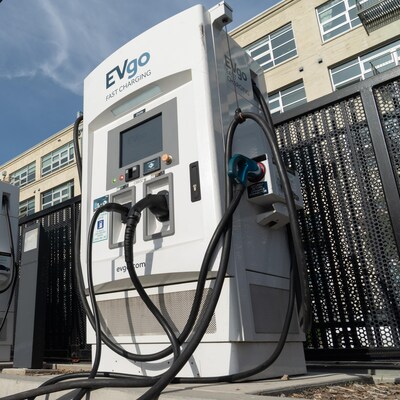The Union Cabinet approved two major schemes with a total outlay of Rs 14,335 crore to promote the use of electric vehicles (EVs), including buses, ambulances, and trucks. The two schemes are PM Electric Drive Revolution in Innovative Vehicle Enhancement (PM E-DRIVE) with an outlay of Rs 10,900 crore over two years, and PM-eBus Sewa-Payment Security Mechanism (PSM) with a budget of Rs 3,435 crore.
The PM E-DRIVE scheme replaces the earlier Faster Adoption and Manufacturing of (Hybrid &) Electric Vehicles (FAME), which was introduced in 2015 with an initial budget of roughly Rs 900 crore. This was followed by FAME-II, which had a budget of Rs 11,500 crore.
Building on the success of FAME, the government has introduced PM E-DRIVE to meet carbon emission reduction goals and achieve EV penetration targets, Information and Broadcasting Minister Ashwini Vaishnaw announced.
Business Standard reported in June that the new scheme for promoting EVs was expected to have a budget of Rs 10,600 crore.
The PM E-DRIVE scheme will support 2.47 million electric two-wheelers (e2Ws), 316,000 electric three-wheelers (e3Ws), and 14,028 e-buses. It includes subsidies and demand incentives worth Rs 3,679 crore to encourage the adoption of e2Ws, e3Ws, e-ambulances, e-trucks, and other emerging EVs. However, the scheme does not cover incentives for e-cars.
In a novel approach, the Ministry of Heavy Industries (MHI) will introduce e-vouchers for EV buyers to access demand incentives. At the time of purchase, the scheme portal will generate an Aadhaar-authenticated e-voucher for the buyer. A link to download the e-voucher will be sent to the buyer’s registered mobile number.
The e-voucher must be signed by the buyer and submitted to the dealer to claim the demand incentives. The dealer will also sign and upload the e-voucher on the PM E-DRIVE portal. Both the buyer and dealer will receive a copy of the signed e-voucher via SMS. The signed e-voucher is necessary for original equipment manufacturers to claim reimbursement of demand incentives.
Business Standard was the first to report on the government’s plan to introduce e-vouchers for EV buyers earlier this week.
Push to EV charging and e-buses
The scheme also addresses a major concern for EV buyers by promoting the installation of EV public charging stations (EVPCs). These stations will be set up in cities with high EV penetration and on selected highways.
A total of 74,300 chargers will be installed, including 22,100 fast chargers for electric four-wheelers, 1,800 fast chargers for e-buses, and 48,400 fast chargers for e2Ws and e3Ws. The budget for EVPCS is Rs 2,000 crore.
To promote e-buses and electric public transport, the PM-eBus Sewa-PSM will support the deployment of over 38,000 e-buses from 2024-25 to 2028-29. It will also support the operation of e-buses for up to 12 years from the date of deployment.
An additional Rs 4,391 crore has been allocated for the procurement of 14,028 e-buses by state transport undertakings and public transport agencies. Demand aggregation will be handled by CESL in nine cities with populations exceeding 4 million: Delhi, Mumbai, Kolkata, Chennai, Ahmedabad, Surat, Bengaluru, Pune, and Hyderabad. Intercity and interstate e-buses will also be supported in consultation with states.
Also, Rs 500 crore has been earmarked for the deployment of e-ambulances, a new initiative to promote comfortable patient transport. Another Rs 500 crore has been provided to incentivise the adoption of e-trucks.
In response to the growing EV ecosystem, MHI will modernise its testing agencies to handle new and emerging technologies to promote green mobility. The upgrade of testing agencies, with a budget of Rs 780 crore under MHI, has been approved.
FAME has driven the growth of the EV industry, increasing sales from fewer than 7,000 units in 2014-15 (FY15) to 1.5 million in 2023-24 (FY24), representing 6.8 per cent of all automobile sales. However, after the conclusion of FAME-II in March 2024, the industry experienced a slowdown.
The government’s efforts have also led to a rise in the number of industry players, from 124 in FY15 to 731 in FY24.
Government data shows that under FAME-I, nearly 278,000 pure EVs received support through demand incentives totalling Rs 343 crore. Under FAME-II, more than 1.6 million vehicles were supported. To meet demand until March 31, 2024, the government increased the subsidy outlay from Rs 10,000 crore to Rs 11,500 crore.
Since April, the government has implemented the Electric Mobility Promotion Scheme (EMPS) 2024 with a budget of Rs 500 crore. However, EMPS has been extended by two months to the end of September, with the outlay increased to Rs 778 crore for subsidising e2Ws and e3Ws.
First Published: Sep 11 2024 | 9:58 PM IST
